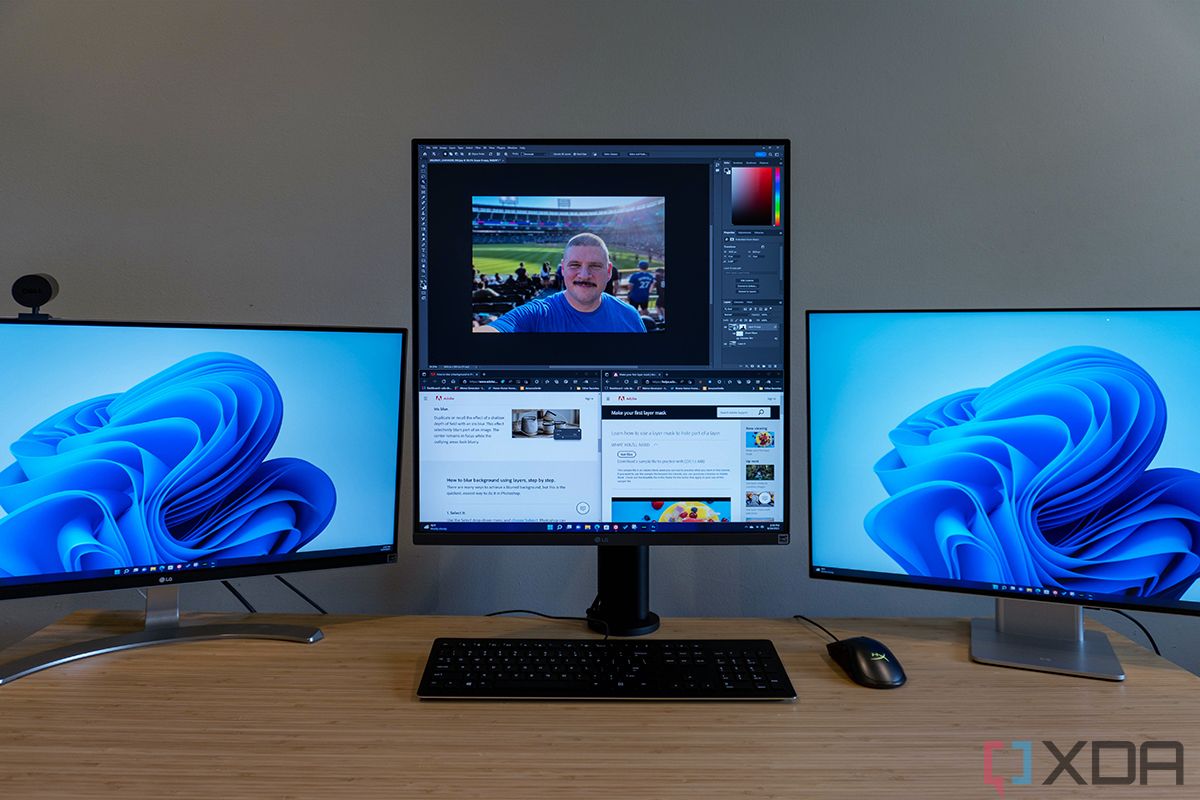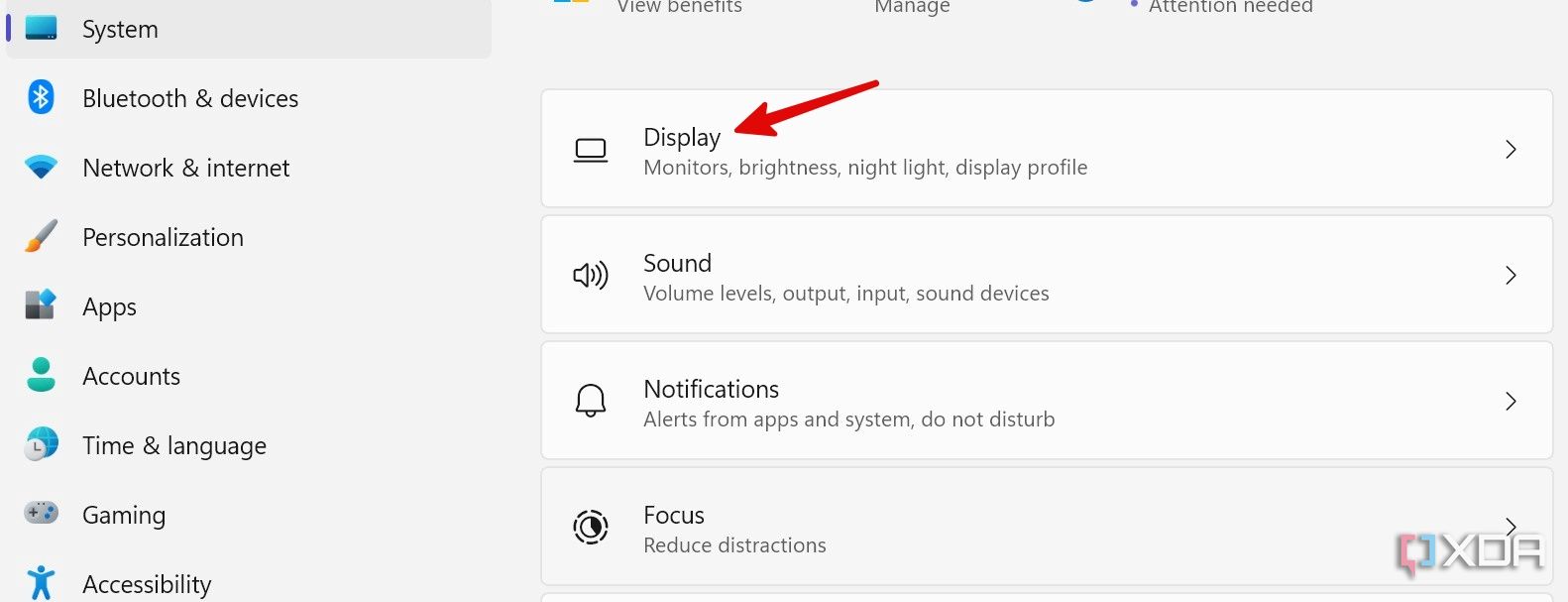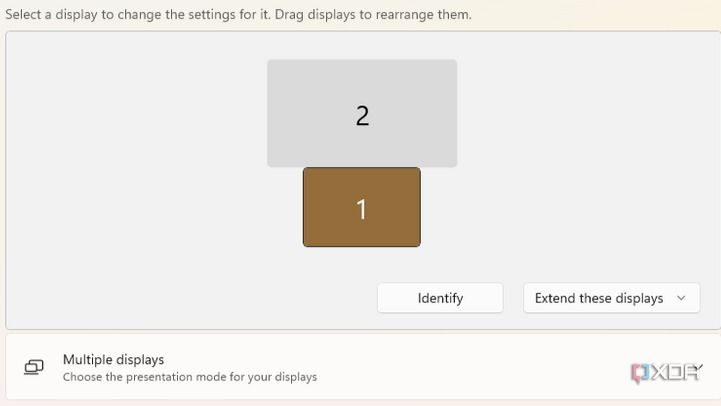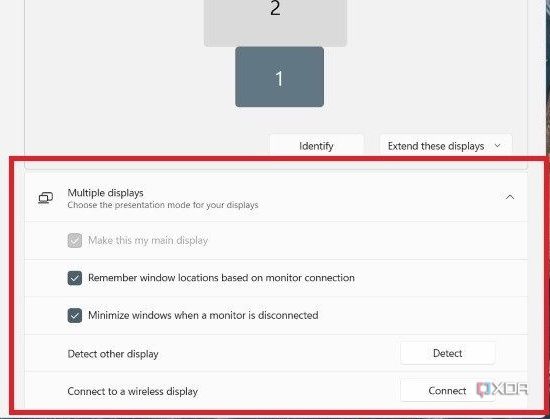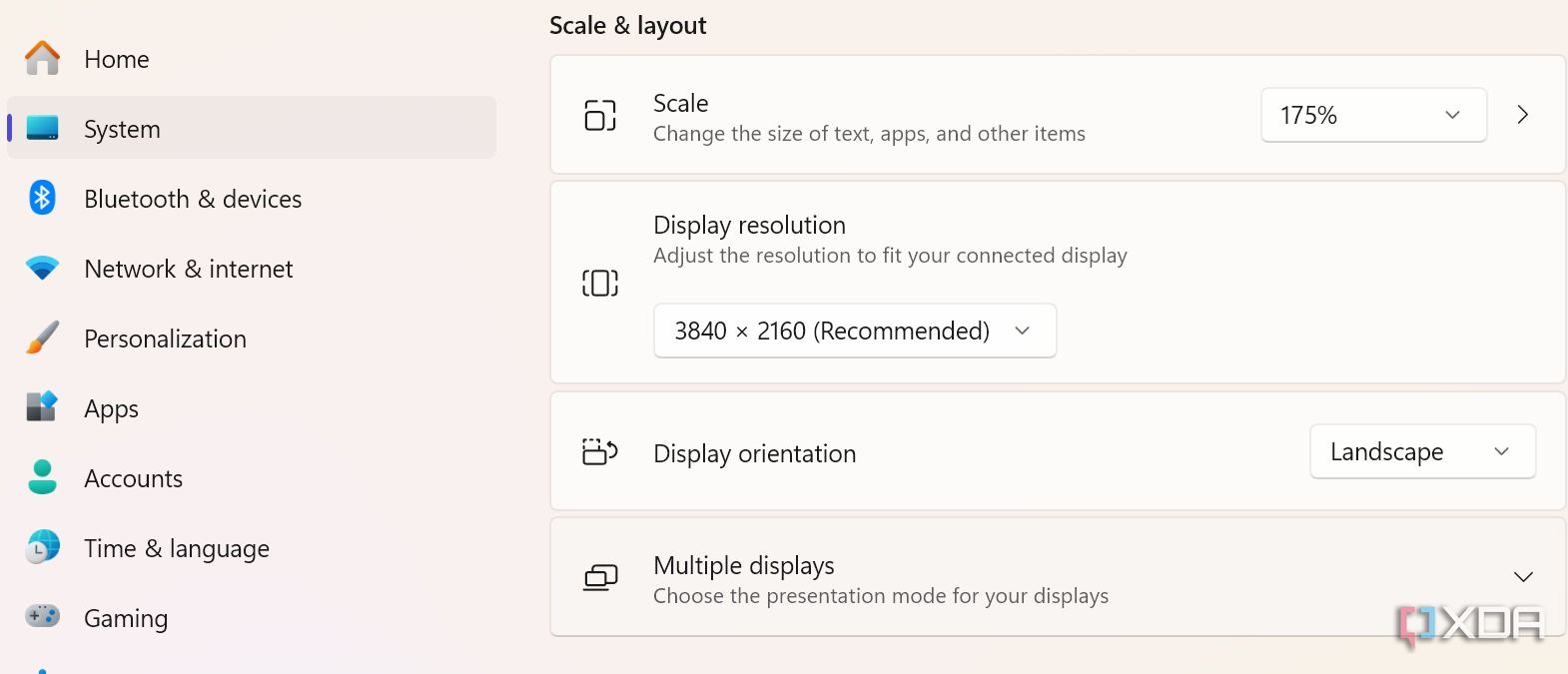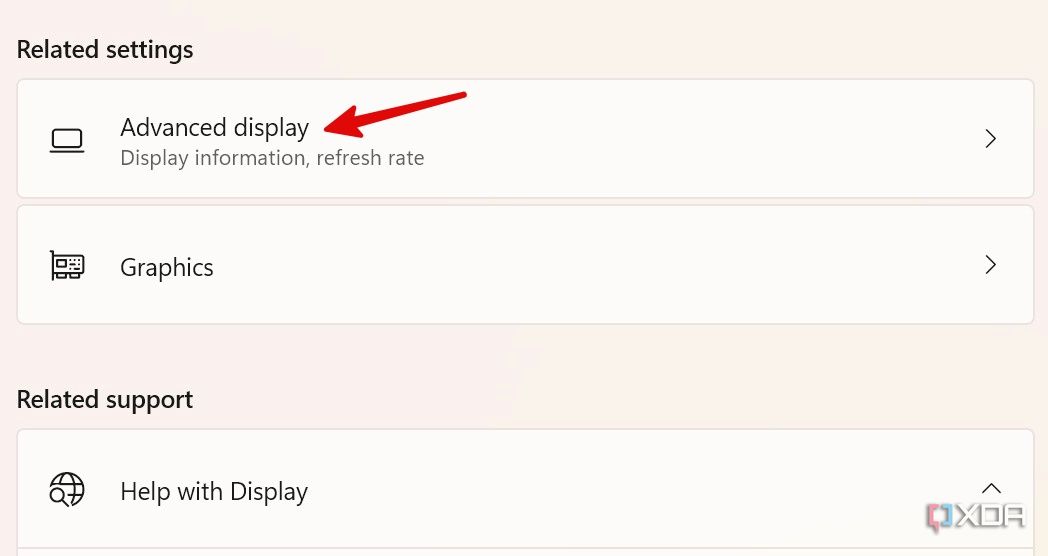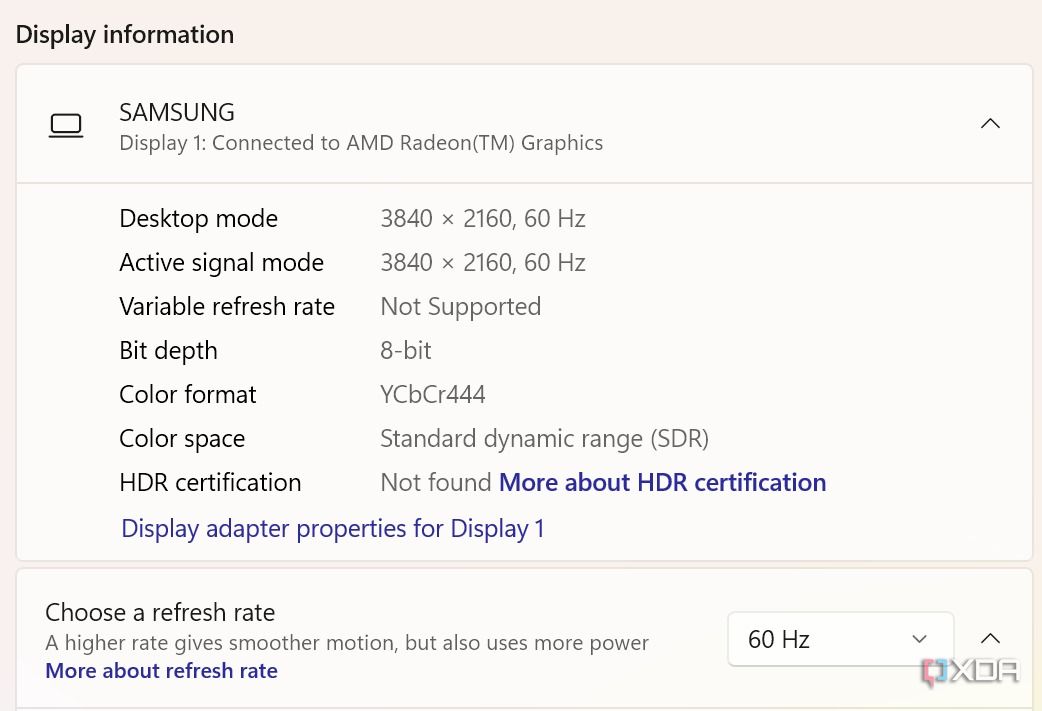Whether you are a programmer, video editor, photographer, or work in any professional field, a multi-monitor setup on a desk can boost your productivity quickly. Thanks to Windows 11's built-in tools, setting up your brand-new monitors doesn't take much time.
Like its predecessors, Windows 11 offers several features for managing multiple monitors. You can tweak system scaling, resolution, color profiles, panel refresh rate, and other changes via the default Settings app on Windows. Let's get started and complete your ideal setup in no time.
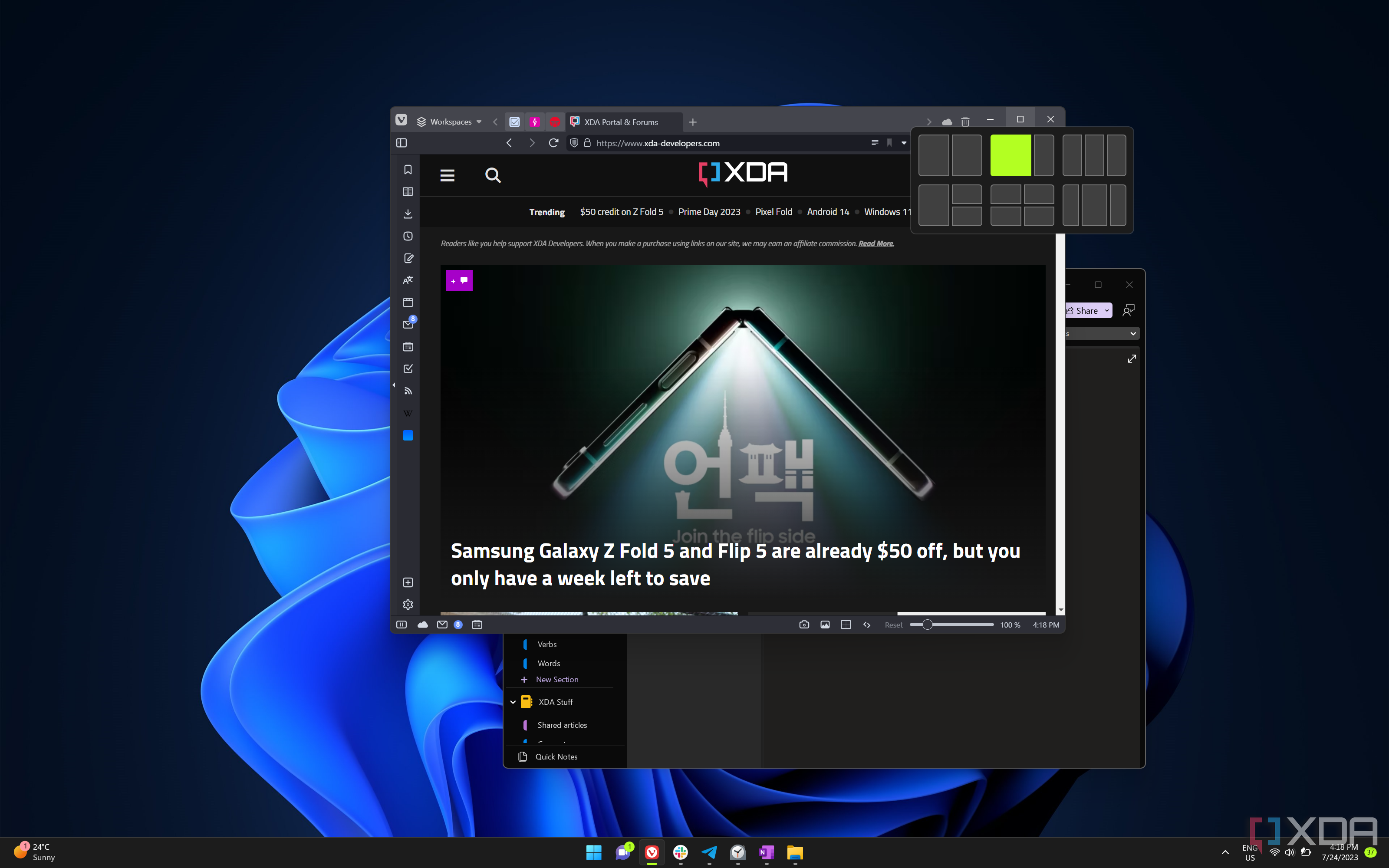
How to use split screen in Windows 10 and 11
Boost your productivity by using the split-screen functionality in Windows 11 and 10 to elevate your multi-monitor setup in no time.Connect and detect multiple monitors on Windows 11
You need a compatible cable like HDMI, DisplayPort, or USB-C to connect your modern monitor to a Windows PC. Older units may require Mini DisplayPort or VGA to establish a connection. Now, keep the requirements below in mind if you plan to use another unit, screen, or laptop with your primary monitor.
If your PC only has one output port, you might need a DisplayPort cable to connect two different displays—granted that they support daisy-chaining. For laptops, you can also use a compatible dock that lets you plug in multiple monitors at the same time without the need for daisy chains or multiple cables. If your PC has multiple output ports, you don't need to deal with docks or daisy-changing.
- Plug your monitors into your PC and turn it on.
-
Launch Settings by pressing the Windows + I keys and go to the System menu. Click Display.
- Click the Identify button to identify your displays.
-
On each of the labeled boxes for your monitor (1, 2, or 3,) click on each one and drag it to represent your actual setup and positioning of the monitors on your desk.
- Click the button next to Identify and change it as you see fit. Depending on the monitor you choose, you can duplicate, extend, or show an image.
That's it. You've learned the basics of managing displays. Now, it's time to explore monitor arrangement a bit more.
Tweak multi-monitor settings on Windows 11
Windows 11 brings some tweaks to set a primary display and remember window locations.
- Open the Display menu in Windows Settings (check the steps above).
-
To make a monitor your main display, click on its number in the section above the Multiple Displays and make sure it is selected. Then check the make this my main display box.
- You can have Windows 11 remember the windows you had open by clicking the remember window locations based on monitor connection button. When you plug and unplug your monitor, Windows will bring back the content you had on your external displays.
- Clicking minimize windows when a monitor is disconnected will help keep your desktop clean, so you don't have a ton of open windows when you disconnect your monitors.
Windows 11 will show you a Detect another display button if you want to connect to more displays. You can also set up a wireless display from this menu.
Change scale and layout settings on a monitor
Users with high-resolution or refresh rate panels may need several tweaks from the Settings menu.
- Navigate to the Display menu in Windows Settings (refer to the steps above).
- Scroll down under the Brightness & color option to change brightness and color profiles. Depending on your monitor, these settings might not be available.
-
If your monitor supports HDR, click the HDR option and follow the instructions on your screen. Windows will play a sample video to showcase how HDR would look.
- Scroll to Scale & layout and pick an option other than the default value. From there, click each of the categories. A smaller scale means smaller text on the screen, and a bigger scale means bigger text.
- Expand the Display resolution and make sure you choose the highest possible option. This will help you make the most out of your monitor.
Change your monitor's display refresh rate
Most monitors and laptops now have higher refresh rates. You can tweak this by going to the Advanced Display section of Windows 11's display settings.
-
Open the Display menu in Windows Settings, scroll down, and click Advanced Display.
-
Choose your respected monitor from the list.
- At the bottom of the settings app, go to choose a refresh rate and pick the option you want.
Simplify your workflow with a multi-monitor setup
Once you plug your display into your Windows 11 PC, tweaking the relevant settings to have it work the way you want is quite easy. Apart from monitor tweaks, the default Settings app is quite feature-rich with lots of options. You can check out our dedicated guide to learn how to use the Settings app on Windows.

